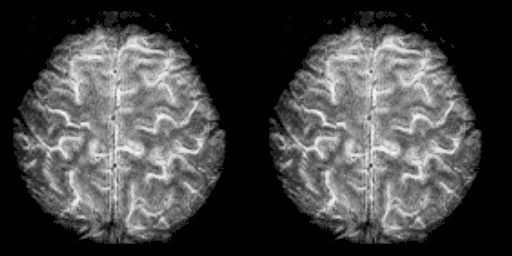Fájl:High Resolution FMRI of the Human Brain.gif
High_Resolution_FMRI_of_the_Human_Brain.gif (512 × 256 képpont, fájlméret: 1,06 MB, MIME-típus: image/gif, ismétlődik, 114 képkocka, 23 s)
Fájltörténet
Kattints egy időpontra, hogy a fájl akkori állapotát láthasd.
| Dátum/idő | Bélyegkép | Felbontás | Feltöltő | Megjegyzés | |
|---|---|---|---|---|---|
| aktuális | 2005. október 23., 13:47 |  | 512 × 256 (1,06 MB) | Lipothymia | High Resolution FMRI of the Human BrainDocument Actions 1 mm cubical voxels at 3 Tesla The following images show the results from two functional MRI experiments: The first with voxel dimensions 1x1x10 mm**3 and 1 slice; The second with voxel dimensions |
Fájlhasználat
Az alábbi lap használja ezt a fájlt:
Globális fájlhasználat
A következő wikik használják ezt a fájlt:
- Használata itt: en.wikipedia.org
- Használata itt: en.wikiversity.org
- Használata itt: ro.wikipedia.org
- Használata itt: sr.wikipedia.org
- Használata itt: uk.wikipedia.org


